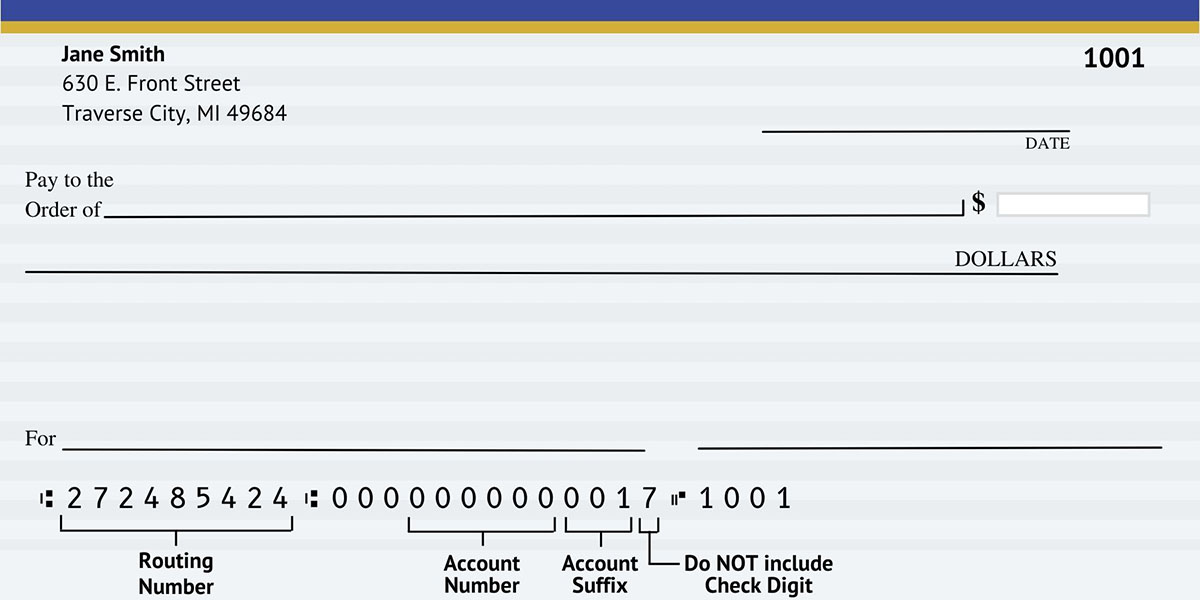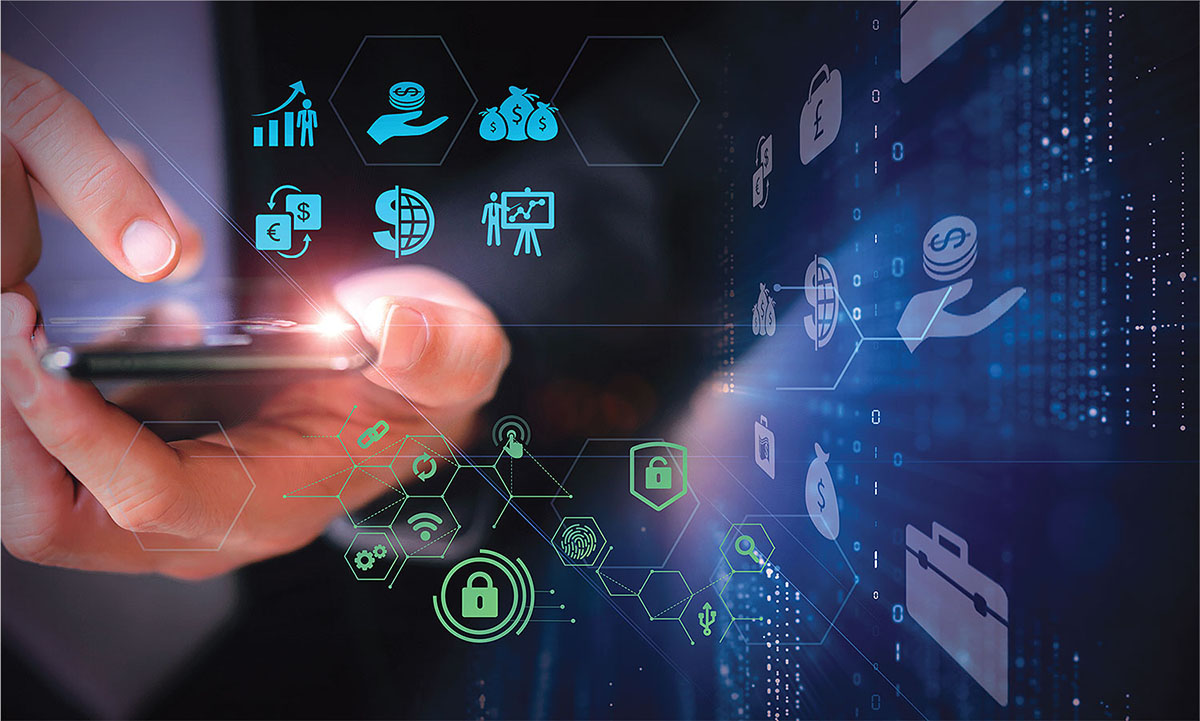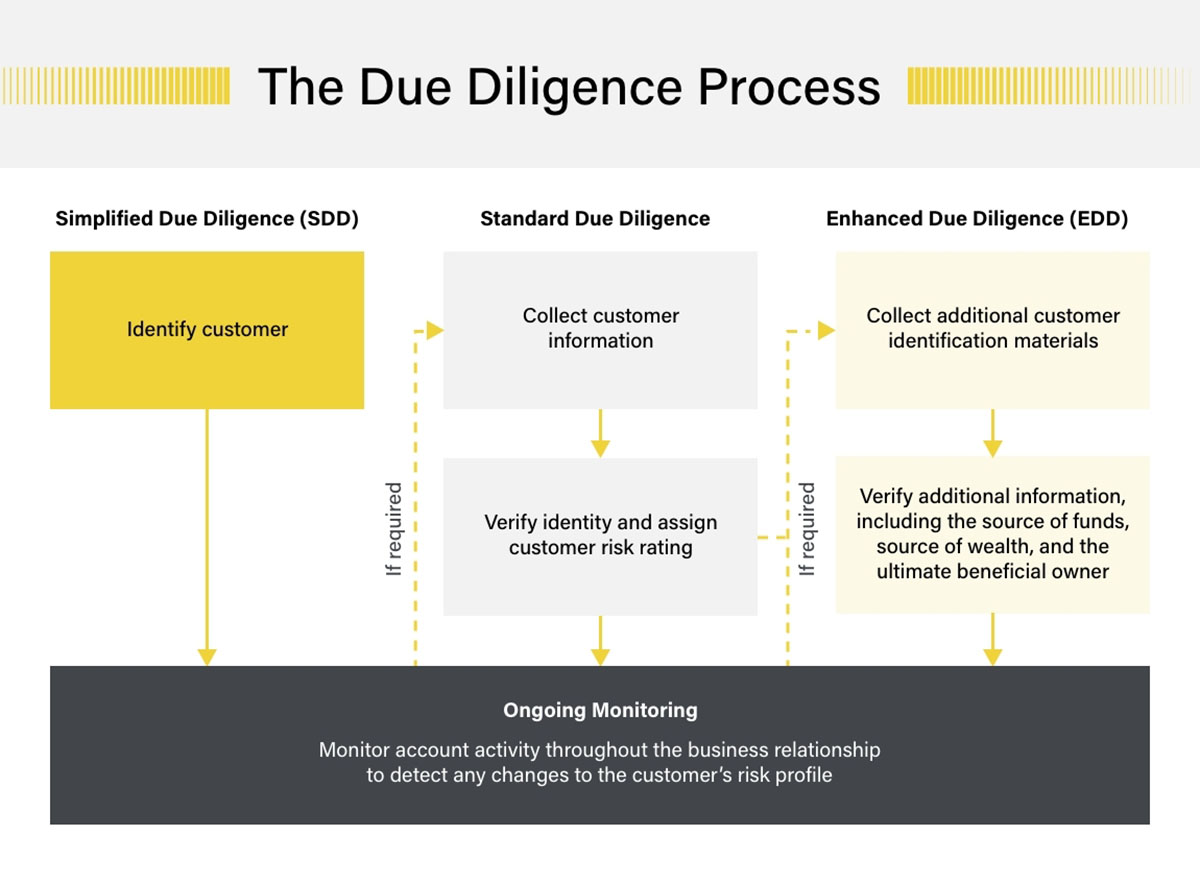

Finance
What Is Biometric Banking
Published: October 11, 2023
Discover how biometric banking is revolutionizing the finance industry, offering secure and convenient ways to verify your identity and access your accounts. Learn about the benefits and future of this cutting-edge technology.
(Many of the links in this article redirect to a specific reviewed product. Your purchase of these products through affiliate links helps to generate commission for LiveWell, at no extra cost. Learn more)
Table of Contents
Introduction
In today’s rapidly evolving digital landscape, technology continues to revolutionize various industries, including the financial sector. One such innovation is the advent of biometric banking, a cutting-edge approach to enhancing security and streamlining the banking experience. Biometric banking harnesses advanced biometric technologies to authenticate and authorize financial transactions, replacing traditional methods such as passwords and PINs. By utilizing the unique physiological and behavioral characteristics of individuals, biometric banking offers a more secure and convenient way for customers to access their accounts and conduct transactions.
As the world becomes increasingly digitized, the need for robust security measures in banking becomes paramount. Traditional methods of security, such as passwords, can be easily compromised, leading to fraudulent activities and breaches. Biometric banking provides a solution to this problem by leveraging biometric data, rendering transactions more secure and minimizing the risk of identity theft.
Let’s delve into the intricacies of biometric banking, exploring its definition, benefits, working mechanisms, and the technologies involved.
Definition of Biometric Banking
Biometric banking refers to the integration of biometric technologies into the banking industry to enhance security, streamline processes, and improve customer experience. Biometrics involves the measurement and analysis of physiological or behavioral characteristics unique to individuals.
In the context of biometric banking, these characteristics serve as a means of securely identifying and verifying the identity of customers. Rather than relying on traditional methods like passwords or PINs, biometric banking employs features such as fingerprints, facial recognition, voice recognition, iris scans, or even behavioral traits like typing patterns to authenticate users.
The use of biometric data in banking relieves customers from the burden of remembering complex passwords and reduces the chances of unauthorized access or identity theft. Each person’s biometric data is distinctive and difficult to forge, providing a high level of security for financial transactions.
Biometric banking technology offers a seamless and convenient experience for customers. Instead of fumbling for a card or remembering multiple login credentials, users simply provide their unique biometric data, which is matched against a stored template to verify their identity. This simple and efficient process accelerates transactions and reduces the time spent on authentication.
By adopting biometric banking, financial institutions can enhance security, protect customer data, and improve overall customer experience. The integration of biometric technologies in banking is a crucial step forward in the digital transformation of the industry, paving the way for a more secure and streamlined future.
Benefits of Biometric Banking
Biometric banking offers numerous advantages for both financial institutions and customers. Here are some key benefits:
- Enhanced Security: One of the main advantages of biometric banking is its heightened security features. By using unique physiological and behavioral characteristics, biometric authentication provides a more reliable and robust method of customer identification and verification. Unlike passwords or PINs, which can be easily stolen or hacked, biometric data is difficult to replicate, significantly reducing the risk of unauthorized access or identity theft.
- Convenience and Speed: Biometric banking eliminates the need for customers to remember complex passwords or carry multiple identification cards. Instead, users can authenticate themselves quickly and easily by providing their biometric data. This streamlined process not only saves time but also enhances customer experience by simplifying the authentication and authorization phases of banking transactions.
- Reduced Fraud: Biometric banking has the potential to significantly reduce fraud within the banking industry. By leveraging advanced biometric technologies, financial institutions can ensure that only authorized individuals have access to their accounts and perform transactions. This helps prevent identity theft, account hacking, and other fraudulent activities that cost individuals and financial institutions billions of dollars each year.
- Improved Customer Experience: Traditional authentication methods, such as passwords, can be cumbersome and frustrating for customers. Biometric banking eliminates the need for complex passwords, allowing for a smoother and more convenient user experience. The use of biometric data also reduces the likelihood of forgotten passwords or locked accounts, minimizing customer frustration and the need for support requests.
- Efficient Compliance: Biometric banking can aid in compliance with regulatory requirements such as Know Your Customer (KYC) and Anti-Money Laundering (AML) protocols. By utilizing biometric data for identification and verification, financial institutions can ensure that customers are who they claim to be, minimizing the risk of fraudulent activities and non-compliance with legal and regulatory standards.
- Future-Proof Technology: Biometric technologies continue to evolve and improve, offering a future-proof solution for the banking industry. As technology advances, new forms of biometric authentication, such as palm prints or vein patterns, may be introduced, further enhancing security and convenience for banking customers.
Overall, biometric banking delivers a range of benefits, including heightened security, improved customer experience, reduced fraud, and efficient compliance with regulatory requirements. By leveraging biometric technologies, banks can enhance their services and protect their customers’ financial assets in an increasingly digital landscape.
How Biometric Banking Works
Biometric banking operates on the principle of using unique physiological or behavioral characteristics to authenticate and authorize financial transactions. The process involves several key steps:
- Enrollment: The first step in biometric banking is the enrollment process. During enrollment, customers provide their biometric data, such as fingerprints, facial features, or voice patterns, to create a unique template that will serve as their authentication key. This data is securely stored in the bank’s database.
- Authentication: When a customer wants to access their account or perform a transaction, they provide their biometric data, which is captured by a biometric device or application. The device then compares the provided biometric data with the stored template to authenticate the user’s identity.
- Verification: After authentication, the biometric data is verified to ensure that it matches the stored template. This step further confirms the user’s identity and enables access to their account or authorization to perform transactions.
- Transaction Processing: Once authentication and verification are complete, the customer can proceed with banking transactions such as fund transfers, bill payments, or account inquiries. These transactions are carried out with the assurance that the user’s identity has been securely verified.
- Maintenance and Updates: Periodically, customers may be required to update their biometric data to maintain the accuracy and effectiveness of the authentication system. This may involve re-enrollment or re-verification to ensure that any changes in the individual’s biometric characteristics are properly captured and updated in the system.
It’s important to note that while biometric data is unique to individuals, it is not stored in its original form. Instead, it is converted into a digital template or encrypted format, ensuring that even if the data is somehow compromised, it cannot be reverse-engineered to recreate the original biometric data.
Biometric banking systems employ robust encryption algorithms and security protocols to safeguard the stored biometric data from unauthorized access or tampering. This further enhances the security of customer information and ensures the privacy of their biometric data.
Overall, biometric banking simplifies the authentication process by replacing traditional methods such as passwords or PINs with more secure and convenient biometric data. By utilizing advanced biometric technologies, banks can offer a seamless, efficient, and secure banking experience for their customers.
Biometric Technologies Used in Banking
Biometric banking relies on a variety of biometric technologies to authenticate and verify the identity of customers. These technologies utilize unique physiological or behavioral characteristics to ensure secure and accurate identification. Here are some commonly used biometric technologies in banking:
- Fingerprint Recognition: Fingerprint recognition is one of the oldest and most widely used biometric technologies. It analyzes the unique ridges and patterns present on an individual’s fingertips to authenticate their identity. Fingerprint scanners capture the fingerprint image, which is then compared to a stored template for verification.
- Facial Recognition: Facial recognition technology identifies individuals by analyzing their distinct facial features, such as the shape of the face, eyes, nose, and mouth. It captures an image of the user’s face using a camera and matches it against the stored template for authentication.
- Voice Recognition: Voice recognition utilizes the unique vocal characteristics of individuals to identify and verify their identity. It analyzes various vocal traits, including pitch, tone, and speech patterns. Users speak into a microphone, and the system compares the captured voice sample with the stored template to authenticate their identity.
- Iris Scanning: Iris scanning technology analyzes the intricate patterns in the iris of an individual’s eye. It captures a high-resolution image of the iris and compares it to the stored template for authentication. Iris scanning is a highly accurate and secure biometric technology commonly used in banking.
- Behavioral Biometrics: Behavioral biometrics involve analyzing unique behavioral patterns exhibited by individuals, such as typing rhythms, mouse movements, or gait recognition. These patterns are captured and compared to the stored templates for authentication. Behavioral biometrics provide an added layer of security, as they are difficult to replicate.
Financial institutions may choose to implement one or more of these biometric technologies based on factors such as security requirements, user experience, and cost-effectiveness. Multiple biometric technologies can also be used in combination to create a multimodal biometric system, further enhancing the accuracy and reliability of customer authentication.
It’s important to note that biometric technologies used in banking are continuously evolving and improving. Advancements in machine learning, artificial intelligence, and sensor technology are further enhancing the accuracy, speed, and usability of these technologies.
Overall, the use of biometric technologies in banking ensures secure and convenient customer authentication, significantly reducing the risk of unauthorized access and fraud.
Security Measures in Biometric Banking
Biometric banking systems employ several robust security measures to ensure the protection and integrity of customer data. Here are some key security measures implemented in biometric banking:
- Encryption: Biometric data is encrypted during transmission and storage to prevent unauthorized access or interception. Encryption algorithms scramble the data, making it unreadable without the proper decryption keys. This ensures the confidentiality and integrity of the biometric information.
- Data Storage: Biometric data is securely stored in a centralized database, protected by multiple layers of security. Access to this database is restricted to authorized personnel only, and additional measures such as firewall protection, intrusion detection systems, and regular security audits are implemented to safeguard the data.
- Template Matching: Biometric banking systems do not store original biometric data but rather create biometric templates or hashes. These templates are used for matching and comparison during authentication, adding an extra layer of security. Even if the template is somehow compromised, it cannot be reverse-engineered to obtain the original biometric data, further protecting customer privacy.
- Anti-Spoofing Measures: Biometric systems incorporate anti-spoofing measures to detect and prevent presentation attacks using fake or altered biometric samples. Techniques such as liveness detection, which analyzes the physical characteristics and movements associated with live biometric samples, are employed to ensure the authenticity of the captured biometric data.
- Multi-Factor Authentication: Biometric banking often combines biometric authentication with other layers of security such as passwords or PINs to create a multi-factor authentication system. This adds an additional barrier against unauthorized access, requiring both biometric data and a secondary authentication credential.
- Regular Updates and Maintenance: Biometric systems require regular updates and maintenance to address vulnerabilities and improve security. This includes updating software, firmware, and security patches to ensure that the system is up-to-date with the latest security measures and protocols.
In addition to these technical security measures, financial institutions also prioritize user education and awareness. Customers are educated about biometric banking systems, their benefits, and how to use them securely. This includes best practices such as not sharing biometric data, using secure devices for biometric capture, and being cautious of phishing attempts or social engineering attacks.
Overall, the combination of encryption, data storage protocols, template matching, anti-spoofing measures, multi-factor authentication, regular updates, and user education ensures that biometric banking systems are highly secure and reliable, protecting customer data and preventing unauthorized access.
Challenges and Concerns in Biometric Banking
While biometric banking offers numerous benefits, there are also challenges and concerns that need to be addressed for its widespread adoption. Here are some key challenges and concerns related to biometric banking:
- Privacy Concerns: One of the primary concerns with biometric banking is the privacy of biometric data. Customers may be reluctant to share their biometric information, fearing that it could be misused or accessed by unauthorized individuals. Financial institutions must address these concerns by implementing robust data protection measures and ensuring the secure storage and handling of biometric data.
- Accuracy and False Acceptance: Biometric systems can sometimes have false acceptance or false rejection rates. False acceptance occurs when the system incorrectly identifies an unauthorized person as an authorized user, while false rejection happens when the system fails to recognize an authorized user. Achieving a balance between security and convenience and minimizing these errors is a challenge that needs to be addressed for reliable authentication.
- Environmental Factors: Certain environmental factors, such as poor lighting conditions or dirty fingerprint sensors, can affect the accuracy of biometric systems. Additionally, changes in an individual’s physical characteristics due to injury or aging may result in difficulty in biometric recognition. Financial institutions need to account for such factors and implement reliable systems that can handle these situations effectively.
- Vulnerability to Spoofing: Biometric systems are susceptible to spoofing attacks, where attackers attempt to fool the system using fake biometric samples or replicas. Financial institutions should implement effective anti-spoofing measures, such as liveness detection and advanced sensors, to mitigate the risk of spoofing attacks.
- Regulatory Compliance: Biometric data is subject to various legal and regulatory requirements, such as data protection laws and privacy regulations. Financial institutions need to ensure compliance with these regulations and implement appropriate measures to safeguard the privacy and security of biometric data.
- Implementation and Integration Costs: Implementing biometric banking systems can involve significant costs, including the procurement of hardware, software, and the necessary infrastructure. Financial institutions need to carefully evaluate the costs and benefits of adopting biometric banking and ensure that the investment aligns with their business goals.
Addressing these challenges and concerns requires a collaborative effort between financial institutions, technology providers, and regulatory authorities. Ongoing research and development efforts are essential to improve the accuracy, security, and usability of biometric banking systems.
Overall, while there may be challenges and concerns associated with biometric banking, continuous advancements in technology and a commitment to privacy and security can help overcome these hurdles and pave the way for a more secure and convenient future of banking.
Future of Biometric Banking
The future of biometric banking is poised for significant growth and advancement as technology continues to evolve and improve. Here are some key trends and developments that shape the future of biometric banking:
- Expansion of Biometric Modalities: While fingerprint and facial recognition are the most prevalent biometric modalities in banking, we can expect an expansion to include other modalities such as palm prints, vein patterns, or even DNA analysis. This increased variety of biometric modalities will provide additional options for customer authentication and further enhance the security and accuracy of biometric banking systems.
- Seamless Multimodal Biometrics: Multimodal biometrics, combining two or more biometric modalities, will become more prevalent in banking. This approach offers enhanced accuracy and reliability by leveraging the strengths of multiple biometric features. For example, combining fingerprint and facial recognition can mitigate false acceptance or false rejection rates, resulting in a more secure and seamless authentication process.
- Advancements in Machine Learning and AI: Machine learning and artificial intelligence (AI) will play a crucial role in improving the performance and user experience of biometric banking systems. AI algorithms can adapt and learn from user behavior, improving accuracy and reducing false acceptance or false rejection rates over time. These technologies will also aid in the development of more sophisticated anti-spoofing measures, providing an additional layer of security.
- Integration with Mobile Devices: As mobile banking continues to gain popularity, biometric authentication will become more integrated into mobile devices, making banking on-the-go even more convenient and secure. Mobile devices equipped with biometric sensors, such as fingerprint scanners or facial recognition cameras, will allow users to authenticate themselves seamlessly, eliminating the need for additional hardware.
- Blockchain and Distributed Ledger Technology: The use of blockchain and distributed ledger technology (DLT) in banking can further enhance the security and privacy of biometric data. Blockchain provides decentralized and tamper-proof storage of biometric information, reducing the risk of data breaches and unauthorized access. Incorporating blockchain into biometric banking systems can increase trust and transparency for both customers and financial institutions.
- Continued Emphasis on Privacy and Security: As biometric banking progresses, consumer awareness and regulatory requirements surrounding data privacy and security will continue to grow. Financial institutions will need to ensure the implementation of robust security measures, comply with privacy regulations, and transparently communicate how biometric data is collected, stored, and used. This emphasis on privacy and security will be crucial for building trust and fostering widespread adoption.
These advancements and trends in biometric banking reflect a future where secure, convenient, and user-friendly authentication methods play a central role. With ongoing innovation and research, biometric banking is set to become an integral part of the financial industry, providing customers with a safer and more streamlined banking experience.
Conclusion
Biometric banking represents a significant breakthrough in the quest for secure and convenient authentication methods in the financial sector. By leveraging unique physiological and behavioral characteristics, biometric technologies offer enhanced security, simplified processes, and improved customer experience.
Through features like fingerprint recognition, facial recognition, voice recognition, iris scanning, and behavioral biometrics, biometric banking systems provide reliable and accurate identification and verification of customers. This not only reduces the risk of unauthorized access and fraud but also eliminates the need for complex passwords or PINs, saving time and enhancing convenience.
While biometric banking offers numerous benefits, it is not without its challenges and concerns. Privacy of biometric data, accuracy rates, vulnerability to spoofing, and compliance with regulatory requirements are among the key considerations that need to be addressed for the successful implementation of biometric banking systems.
Looking ahead, the future of biometric banking holds tremendous potential. Advancements in biometric modalities, multimodal biometrics, machine learning, and AI will further enhance security and improve user experience. Integration with mobile devices, blockchain technology, and a continued emphasis on privacy and security will drive the widespread adoption of biometric banking.
In conclusion, biometric banking is poised to revolutionize the financial industry, offering a secure and seamless user experience. By combining advanced biometric technologies with robust security measures and user awareness, financial institutions can create a future where customers can confidently conduct their banking transactions, knowing that their identities and assets are protected.














